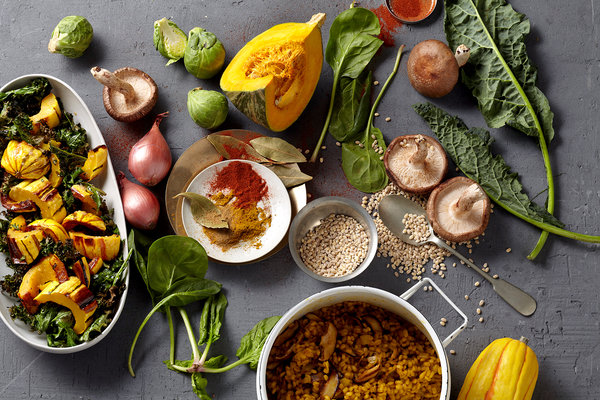At its core, plant-based living defines a process of creating a diet based on local or organically-grown food, which offers formidable nutritional benefits and nourishment. But what a lot of people who aren’t in the “extreme fitness” circle don’t know is that plant-based living has been one of the hottest trends across the world over the past decade, and actually continues to ramp up support as more options rear their heads and become available. Why has plant-based living become such an attractive lifestyle choice, especially amongst athletes?
To begin with, plant-based living yields an enormous amount of health benefits, from lowering cholesterol and helping to prevent diabetes to weight loss, healthier skin and more – and all of these can be attributed to cutting calories, fats and oils out of everyday diets. Indeed, from bodybuilders to tennis players, athletes attempting to improve their performance have made the switch to veganism, which excludes eggs, meat, dairy products and all other ingredients derived from animals.
Fun Facts: Baseball player Prince Fielder, uber-marathoner Scott Jurek and ice hockey player Mike Zigomanis have all officially defined themselves as vegans; Seba Johnson, Olympic skier, has relished the vegan lifestyle from birth, while tennis superstar Venus Williams turned to vegan after learning she had the autoimmune disease Sjogren’s syndrome.
The Health Benefits of a Plant-Based Lifestyle
According to fitness experts, a plant-based diet’s rewards can run the gamut from a jolt of energy and more restful sleep to superior performance, with many personal trainers seeing athletes experience faster recovery times, training maximization and, ultimately, performance improvement. With no clinical trials on athletes who are vegan as of yet, experts like Sharon Palmer, writer of The Plant-Powered Diet, believe in studies that suggest a high antioxidant and anti-inflammatory diet can help treat and prevent issues related to recovery.
“It is logical that compounds that are anti-inflammatory would help athletes avoid training-related inflammation,” says Palmer, a registered dietitian. “Interestingly enough, most anti-inflammatory compounds are found in plant foods.” In general, though, many of these experts agree that in today’s society, people should feel comfortable knowing that obtaining sustenance from our planet is a positive action, and that consuming such foods is more than likely very healthy for them. Perhaps even more interesting is the notion that the individuals who actually understand the importance of changing their diets in this way are the ones surprised at the outcomes.
In more recent years, athletes considered “high-level” types have been, surprisingly, among those individuals “shocked” and positively enlightened to learn that their performance going forward could be catapulted by way of a plant-based lifestyle. Here’s the conundrum many endurance athletes have expressed when diving head-first into this subject: As we thrash around through the ocean’s mean waves, pump bars and rings of iron in the weight room, have our hammers cranked for countless hours and then repeatedly see hot pavement be the recipient of our pounded flesh, do we require animals’ meat, milk and eggs to restore and maintain our amino acids, vitamins and minerals…or can we get all our performance and recovery needs from plants alone?
Your Body May be too Acidic
As cited by the plant-based diet community, one of the primary advantages is the acid-forming properties of dairy and meat products as compared directly to the somewhat “alkaline” (non-acidic)-forming whole plant-based foods. The logic here is that an excessively acidic blood pH could cause inflammation, impairing recovery (as we hinted at earlier); the reason there’s increased acidity in a meat-based diet is because animal protein happens to be rich in amino acids (which contain sulfur) that increase both production and excretion of sulfuric acid during their metabolism. There are those in the scientific community that believe this acidity can be so high, calcium is actually leached from the the bones to neutralize the acid.
As you most likely already know, many vegan and vegetarian diets include copious amounts of juicing and blending, primarily because of the nutritional density and digestion ease a blended slurry of vegetables, fruits or nuts provides. Because these foods are easily absorbed and digested, they consume less energy to produce more energy, a process that possibly allows the exercising athlete to boast a healthier gastrointestinal state.
Interestingly, many athletes who have made the jump to a plant-based diet have reported feeling an immediate surge in energy…and that’s vital in their “line of work.”


